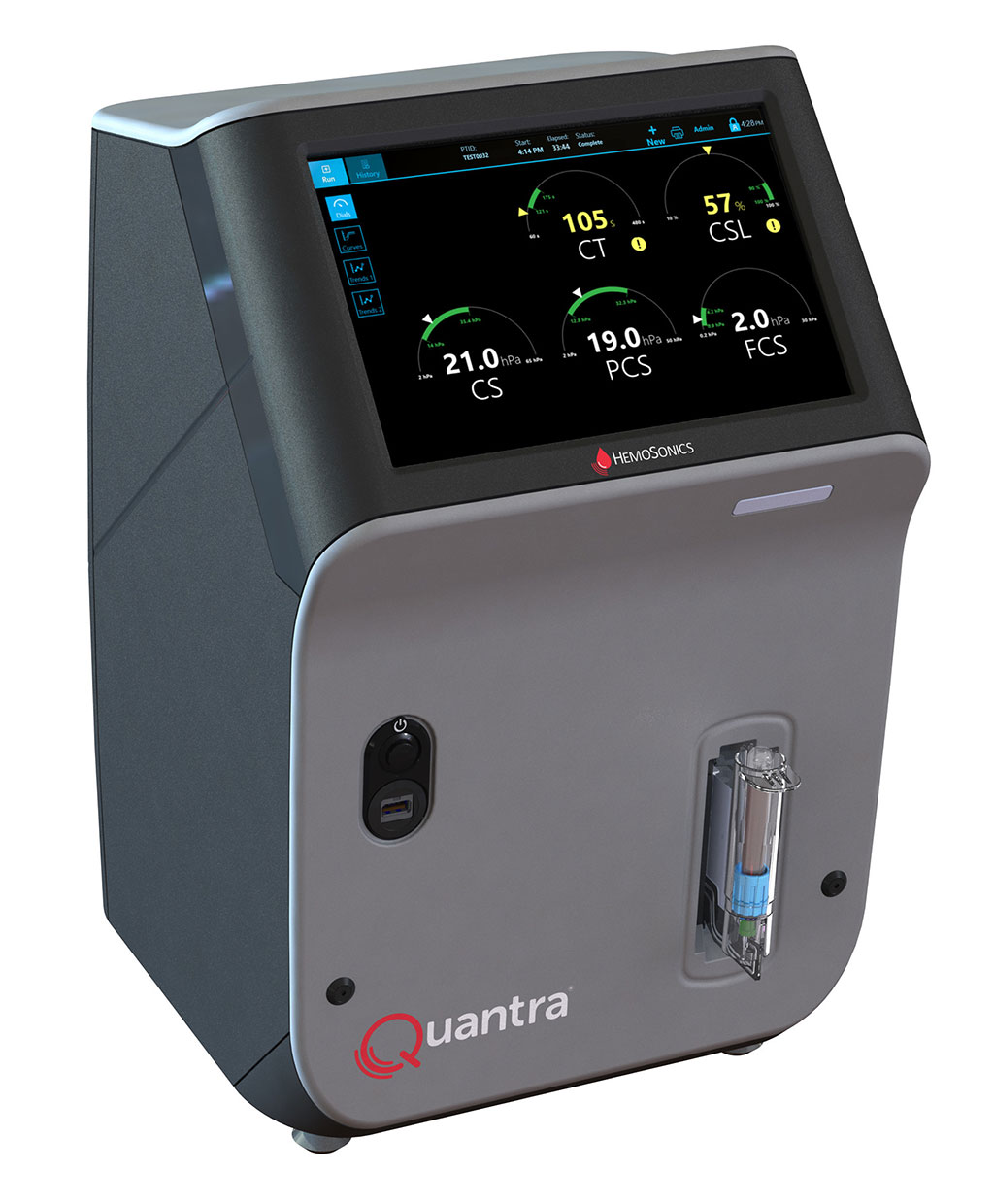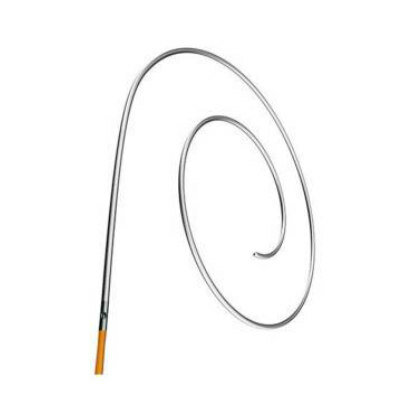Next-Gen POC Whole Blood Hemostasis System Recognizes Specific Needs of EDs and ORs 
|
By HospiMedica International staff writers Posted on 01 Nov 2022 |

Current hemostatic tests provide only a subset of needed information, or take too long to be useful in critical bleeding situations, forcing clinicians to use iterative transfusion protocols that do not account for the patient’s actual coagulation status. This approach leads to over-transfusion and transfusion of inappropriate products. Up to 60% of red blood cell (RBC) transfusions lack clinical justification. Further, blood products are costly, making up about 1-2% of a hospital’s budget. Hospitals around the world are thus seeking ways to reduce their transfusion rates to improve outcomes and reduce costs.
Now, a next-generation point-of-care (POC) hemostasis system leverages innovative medical-grade ultrasound technology to measure the coagulation properties of a whole blood sample. The system enables clinicians to deliver patient-centered coagulation therapy that improves care and optimizes blood product usage. With its rapid results, ease of operation, and dials screen for straightforward interpretation, it is the only whole blood hemostasis testing system specifically cleared for use in POC settings, such as operating rooms, emergency departments, and intensive care units.
HemoSonics, LLC’s (Durham, NC, USA) innovative Quantra hemostasis analyzer platform, based on patented SEER sonorheometry, enables fully automated, rapid point-of-care viscoelastic testing and gives physicians the results they need at the POC to make more informed decisions. SEER uses state-of-the-art ultrasound technology to measure clot stiffness (shear modulus of elasticity) over time using ultrasound-induced resonance. The Quantra system’s innovative closed-cartridge design requires no open-tube blood manipulation after sample collection and it automatically runs internal QC every eight hours and with every test. The Quantra system’s innovative ultrasound technology, proprietary closed-cartridge design, unparalleled ease of use, and ease of interpretation make it uniquely suited for use in critical or emergency care settings.
HemoSonics has now received 510(k) market clearance from the U.S. Food and Drug Administration (FDA) for the Quantra Hemostasis System with QStat Cartridge. The FDA clearance of the QStat Cartridge expands the Quantra System's indications for use to include trauma, and liver transplantation procedures. The QStat Cartridge assay, in addition to the System's already established QPlus Cartridge assay, increases Quantra's overall diagnostic capabilities to now cover the broadest range of clinical indications of any point-of-care hemostasis analyzer available in the U.S. market today.
"The Quantra Hemostasis System with QStat Cartridge is breaking new ground and leading innovation in the point-of-care and laboratory-based whole blood hemostasis testing market. Today's clearance significantly expands the clinical indications of the Quantra System, creating the greatest opportunity to address the critical unmet clinical needs of our healthcare provider partners and the patients that we serve," said Robert Roda, President, and Chief Executive Officer of HemoSonics.
"Point-of-care data is the answer to PBM-guided patient decisions. It is a triple win; Patients get improved outcomes, public health is improved, and cost savings are achieved," said Dr. Bruce Spiess, Medical Director of HemoSonics. "The Quantra Hemostasis System with QStat and QPlus Cartridges will assist more clinicians in determining which specific blood products are needed to rapidly treat individual patients. It has the potential to positively impact patient outcomes for hundreds of thousands of trauma patients and thousands of liver transplant recipients each year by optimizing blood product usage and conserving critically low blood supplies."
Related Links:
HemoSonics, LLC
Latest Point of Care News
Channels
Critical Care
view channel
Ingestible Capsule Monitors Intestinal Inflammation
Acute mesenteric ischemia—a life-threatening condition caused by blocked blood flow to the intestines—remains difficult to diagnose early because its symptoms often mimic common digestive problems.... Read more
Wireless Implantable Sensor Enables Continuous Endoleak Monitoring
Endovascular aneurysm repair (EVAR) is a life-saving, minimally invasive treatment for abdominal aortic aneurysms—balloon-like bulges in the aorta that can rupture with fatal consequences.... Read more
Wearable Patch for Early Skin Cancer Detection to Reduce Unnecessary Biopsies
Skin cancer remains one of the most dangerous and common cancers worldwide, with early detection crucial for improving survival rates. Traditional diagnostic methods—visual inspections, imaging, and biopsies—can... Read moreSurgical Techniques
view channel
Robotic Assistant Delivers Ultra-Precision Injections with Rapid Setup Times
Age-related macular degeneration (AMD) is a leading cause of blindness worldwide, affecting nearly 200 million people, a figure expected to rise to 280 million by 2040. Current treatment involves doctors... Read more
Minimally Invasive Endoscopic Surgery Improves Severe Stroke Outcomes
Intracerebral hemorrhage, a type of stroke caused by bleeding deep within the brain, remains one of the most challenging neurological emergencies to treat. Accounting for about 15% of all strokes, it carries... Read morePatient Care
view channel
Revolutionary Automatic IV-Line Flushing Device to Enhance Infusion Care
More than 80% of in-hospital patients receive intravenous (IV) therapy. Every dose of IV medicine delivered in a small volume (<250 mL) infusion bag should be followed by subsequent flushing to ensure... Read more
VR Training Tool Combats Contamination of Portable Medical Equipment
Healthcare-associated infections (HAIs) impact one in every 31 patients, cause nearly 100,000 deaths each year, and cost USD 28.4 billion in direct medical expenses. Notably, up to 75% of these infections... Read more
Portable Biosensor Platform to Reduce Hospital-Acquired Infections
Approximately 4 million patients in the European Union acquire healthcare-associated infections (HAIs) or nosocomial infections each year, with around 37,000 deaths directly resulting from these infections,... Read moreFirst-Of-Its-Kind Portable Germicidal Light Technology Disinfects High-Touch Clinical Surfaces in Seconds
Reducing healthcare-acquired infections (HAIs) remains a pressing issue within global healthcare systems. In the United States alone, 1.7 million patients contract HAIs annually, leading to approximately... Read moreHealth IT
view channel
Printable Molecule-Selective Nanoparticles Enable Mass Production of Wearable Biosensors
The future of medicine is likely to focus on the personalization of healthcare—understanding exactly what an individual requires and delivering the appropriate combination of nutrients, metabolites, and... Read moreBusiness
view channel
Philips and Masimo Partner to Advance Patient Monitoring Measurement Technologies
Royal Philips (Amsterdam, Netherlands) and Masimo (Irvine, California, USA) have renewed their multi-year strategic collaboration, combining Philips’ expertise in patient monitoring with Masimo’s noninvasive... Read more
B. Braun Acquires Digital Microsurgery Company True Digital Surgery
The high-end microsurgery market in neurosurgery, spine, and ENT is undergoing a significant transformation. Traditional analog microscopes are giving way to digital exoscopes, which provide improved visualization,... Read more
CMEF 2025 to Promote Holistic and High-Quality Development of Medical and Health Industry
The 92nd China International Medical Equipment Fair (CMEF 2025) Autumn Exhibition is scheduled to be held from September 26 to 29 at the China Import and Export Fair Complex (Canton Fair Complex) in Guangzhou.... Read more















